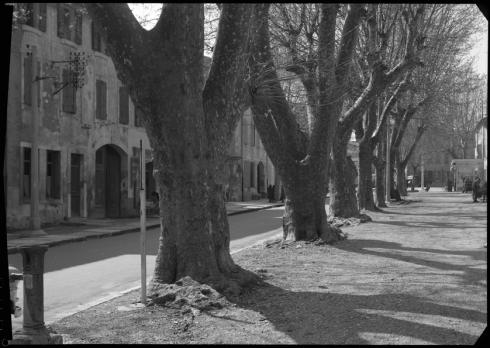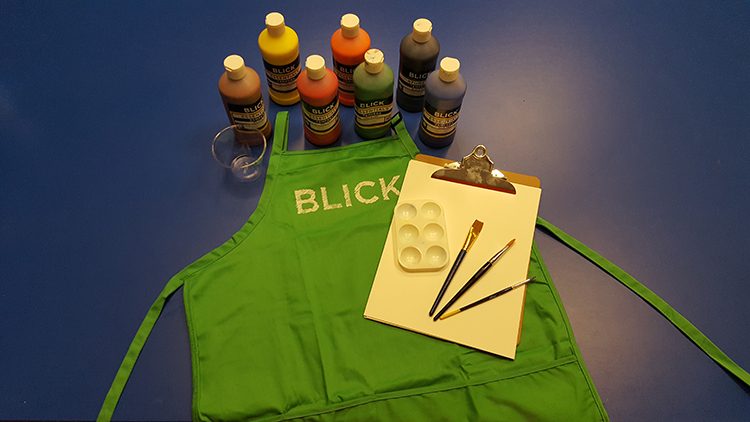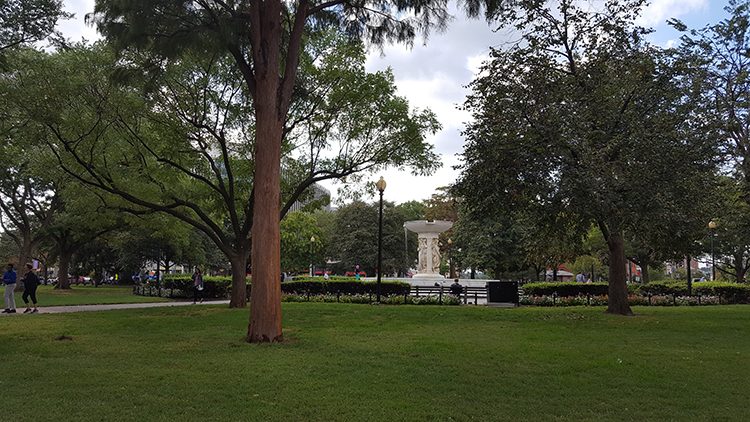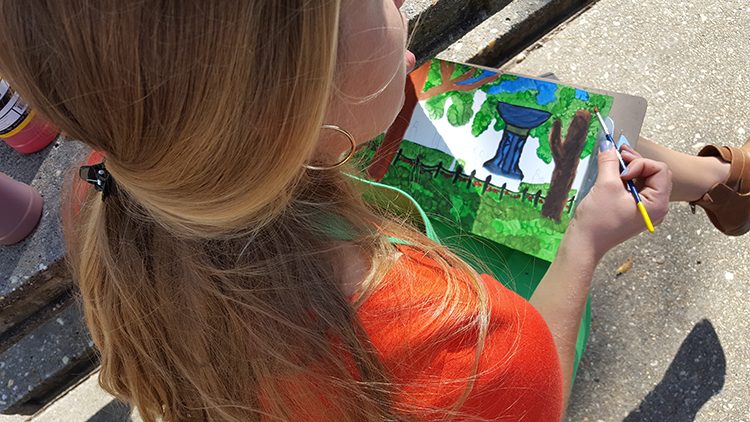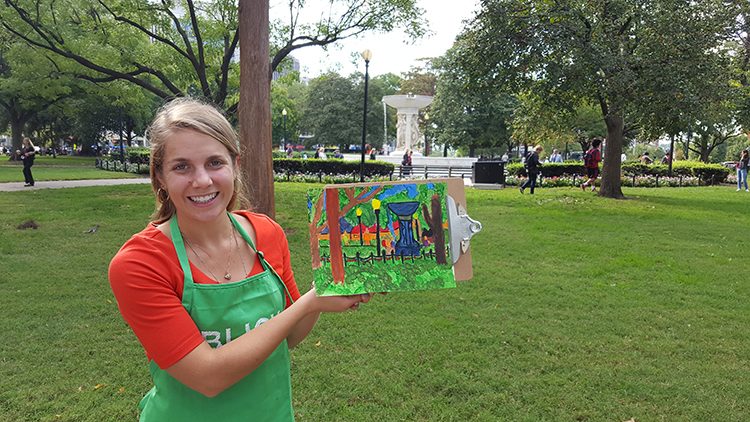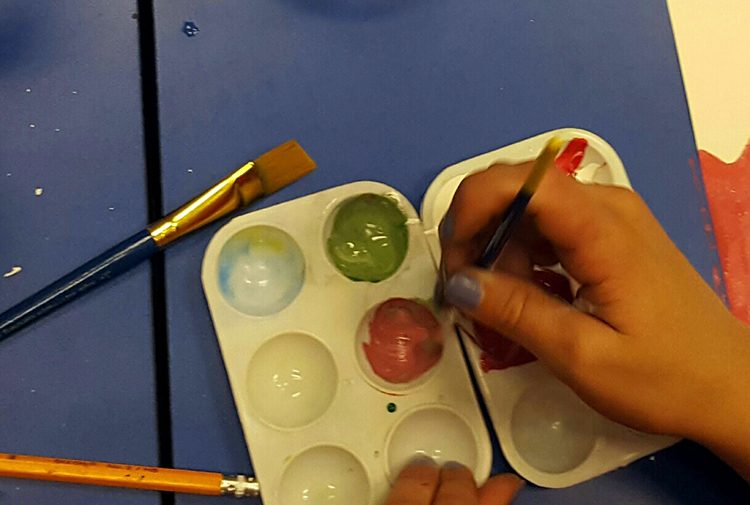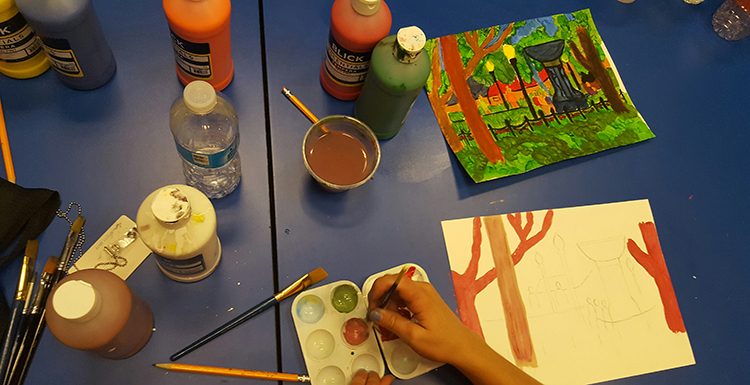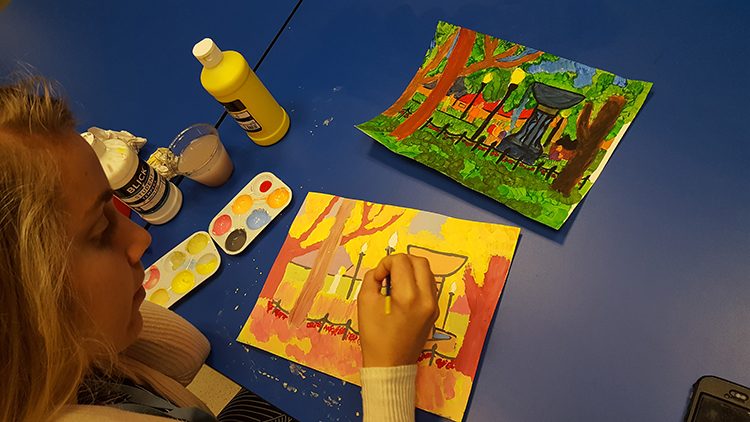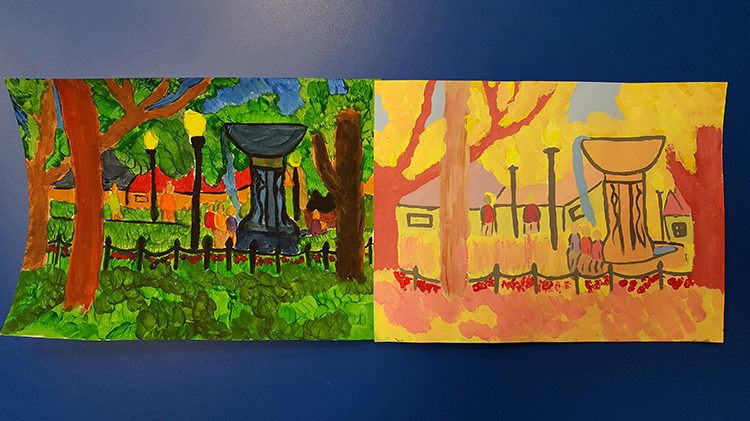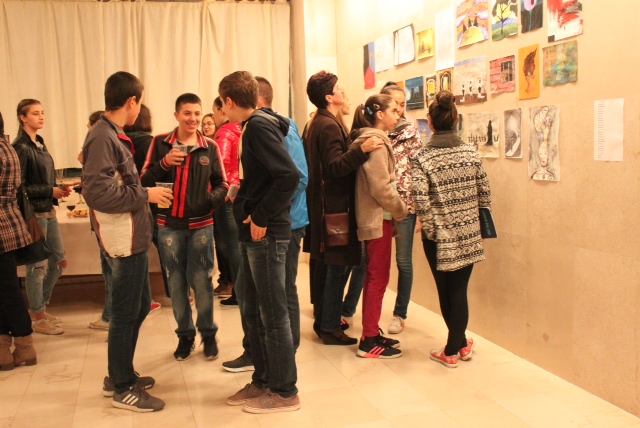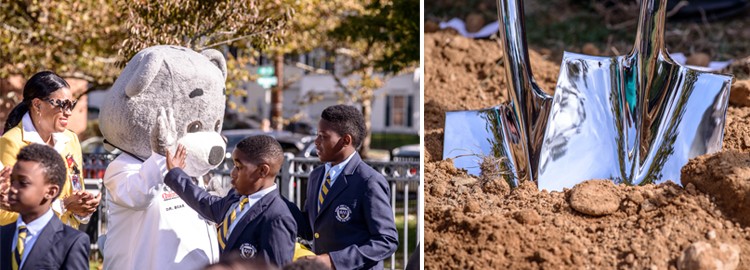
Left: Vincent van Gogh, The Road Menders, 1889. Oil on canvas, 29 x 36 1/2 in. The Phillips Collection, Washington, DC. Acquired 1949. Right: Vincent van Gogh, The Large Plane Trees (Road Menders at Saint-Rémy), 1889. Oil on fabric, 28 7/8 x 36 1/8 in. The Cleveland Museum of Art. Gift of the Hanna Fund, 1947.
As we say farewell to summer and welcome the yellow leaves of autumn, we’re excited to explore the world of colors and its connection to our emotions.
For this activity, we’re taking elements of Vincent van Gogh’s creative process in his works The Road Menders (from the Phillips’s permanent collection) and The Large Plane Trees (part of the Cleveland Museum of Art’s permanent collection) by guiding you through a series of thinking moments as you create two of your own van Gogh-inspired paintings. These paintings were the focal point of an exhibition at the Phillips, Van Gogh Repetitions, in 2013.
About the Artist
Vincent van Gogh was born in Groot-Zundert, Holland on March 30, 1853. The son of a pastor, van Gogh pursued a religious life as a preacher before deciding to devote his life to painting. He was influenced by the work of Peter Paul Rubens and Japanese prints, which were very popular at the time. In 1886, van Gogh moved to Paris to join his brother Theo, where he was introduced to the Impressionist style of painting. Two years after arriving in Paris, van Gogh moved to the south of France in the town of Arles. Throughout his life, van Gogh struggled with his mental health and spent many years in and out of asylums.
Look Closely:
Both The Road Menders and The Large Plane Trees appear to be of the same street scene. As a result of x-ray technology, it was discovered that The Large Plane Trees was painted before The Road Menders. It’s believed that van Gogh painted The Large Plane Trees outside and very quickly before painting The Road Menders indoors. Since he couldn’t afford canvas at the time, van Gogh painted The Large Plane Trees on a piece of cloth fabric. He wrote to his brother Theo telling him of the beautiful scene and how he needed canvas to paint it. Theo sent him canvas, which he then used to paint The Road Menders.
Thinking Moment
Take a few moments to examine each painting. As seasons change, so do the colors we see in nature. Compare and contrast as you think about these questions:
- What’s different? What’s similar?
- What season do you think each painting takes place in? What do you see that makes you think that?
- How do these paintings make you feel? How do you think van Gogh felt when he was painting these works?
Art Project
Age suggestions: Suitable for all ages
Time Estimate: 15 minutes prep time
Total paint time varies by individual preference
(2-4 hours estimate)
What you’ll need:
Painting Palette (paper plates will work too)
Flat surface or clip board
Pencil
Apron (or clothes you feel comfortable getting paint on)
Cup
Water
Napkins
2 Sheets of plain paper
Paint (we used tempera, but any will do)
Paintbrushes
“Gogh” outside and get inspired!
For this art project you will create two paintings. Like van Gogh, head outside to paint your first work, then head back inside to paint your second. Here is an actual photo of the scene where van Gogh painted The Large Plane Trees.
Steps for Painting
Step 1: Gather your materials. You will be taking these outside, so make sure you also have a bag or box to place your materials in.
Step 2: Pick a location where you are going to paint. We chose Dupont Circle in DC.
Step 3: Head to your location and set up your materials. As you can see here, we found a n outdoor chess table to use.
Step 4: Sketch an outline of your scene using a pencil. Here, the clipboard was very handy!
Step 5: Paint your outdoor scene over your sketch.
Step 6: Let your beautiful masterpiece dry!
Step 7: When you’re finished, pack up your materials and head back inside to begin your second painting.
Van Gogh is often thought to have worked quickly, working with speed. However, he also often painted carefully and deliberately, painting the same scene repeatedly, rethinking and revising figural placement and color. In his second painting The Road Menders, he’s not depicting the exact colors he sees in nature. It’s possible his color palette instead reflected his feelings and emotions.
Thinking Moment
As you begin your second painting, think about the colors you’re using.
- What emotions do you want to convey?
- Are your color choices vibrant, cool, warm, muted, etc.?
- Are your colors a good match with the emotions you want to convey?
Steps for Painting 2
Step 1: Choose your colors. For our second painting, we chose a warmer palette, using mostly yellow, red, orange, and pink. We wanted to express a warm, happy feeling which we felt these colors did well. What do you think?
Step 2: Replicate the scene from your first painting by drawing a light outline with a pencil to a new sheet of paper.
Step 3: Start painting with your new color palette!
Step 4: When you’re finished, clean up your materials while your painting is drying. Now that you’re done, set both of your works side-by-side.
Ta-da!
Reflection
Take a moment to admire and be proud of what you’ve created! Wrapping up this activity, ask yourself these final questions (remember, there are no right or wrong answers):
- When you compare your paintings, what’s different; what’s similar?
- Do your paintings and their colors resemble certain seasons? If so, which season and why?
- How do you feel about one painting versus the other? Do you see different emotions?
Share your work with the Phillips, we’d love to see your project! Take a picture of your paintings together and send us a comment below. Check back soon for the next project of the Phillips-At-Home Series. See you next time!
Marin Williams and Betty Q. Le, K12 Education Interns

